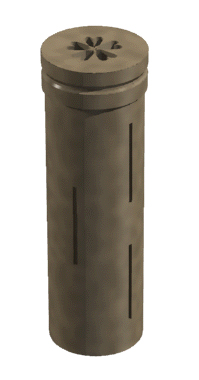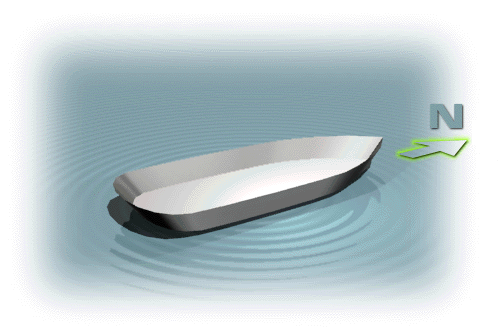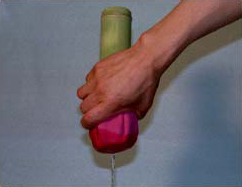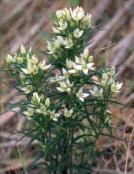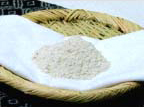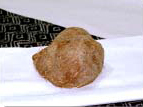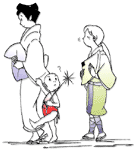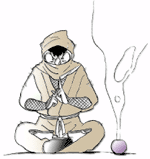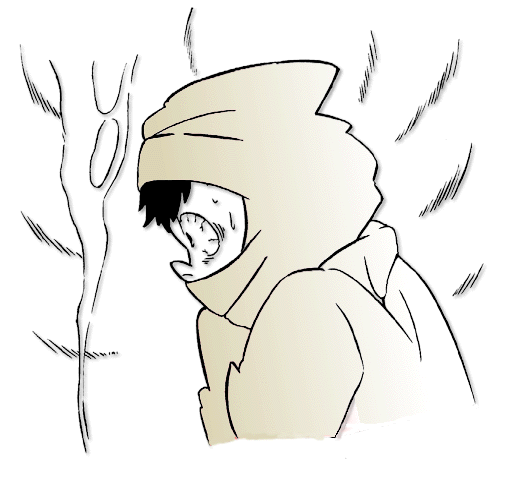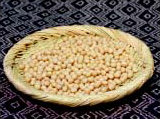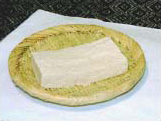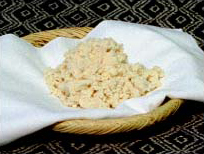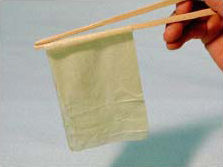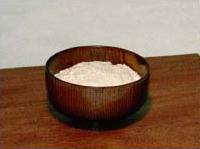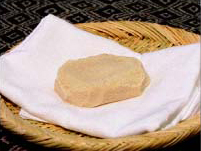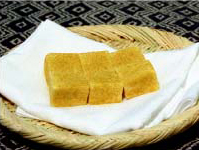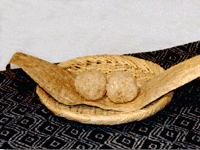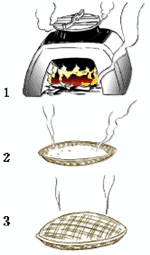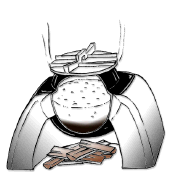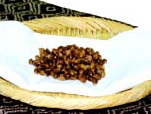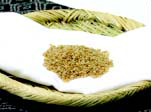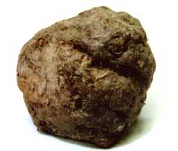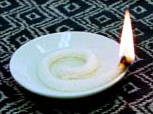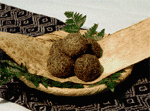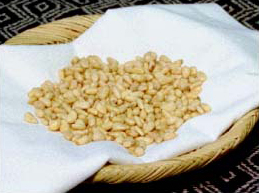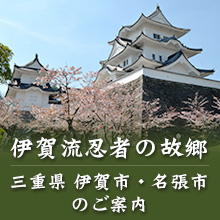The pharmacology developed by the ninja combined elements of science and chemistry. Astonishingly, the ninja invented a live coal that burnt for over 12 hours. This special ninja coal, called “do no hi”, could be hidden in the ninja’s clothing whilst still alight. It could also be used as a body warmer when camping out in winter or in other poor conditions to help the ninja withstand the cold. Charred Japanese paper, knotweed and eggplant stems were packed into a 15cm ventilated copper tube which had a cover so that it could be safely kept in the ninja’s clothing.
The Ninja Compass
What! Did the ninja also make compasses?
Although this was not directly related to their knowledge of herbs and medicine, the ninja also handmade their own compasses which always pointed north. These compasses were called “kishuku”. Iron would be magnetized by heating it until it was red hot, and then plunging it into cold water to cool. The magnetic piece of iron was then flattened and made into the shape of a boat. This could then be floated in water, and the direction in which the boat pointed was north.
Of Reddish Purple Bandages
One of the ninja’s most ingenious pieces of equipment was a reddish-purple colored piece of cloth which had all kinds of uses. It could, for example, be used to cover the face, as a headband, or instead of a rope for climbing walls. In this respect it differed little from any other piece of cloth. What marked it out as a special ninja tool was the dye the cloth was dyed in. It was dyed in a kind of pulse called sappanwood, which gave it disinfecting properties. It could then be used to filter water or bandage light cuts and grazes. Only the ninja, knowing of sappanwood’s disinfecting properties, could have thought of inventing such a thing.
Sterilization, Insect Control and Herbal Dyes
Japanese Green Gentian
Japanese green gentian is also known as “toyaku” in Japanese, which literally means something like “effective medicine”. Its bitterness and effectiveness as a remedy for stomachaches is well known.
What is less widely known is that dying underwear in a brew made from this plant gets rid of fleas and lice. These are no longer a problem nowadays, but the protection it gave against insects was important to the ninja.
Chinese Cork Tree
The bark of this tall tree was boiled to make a dye. Paper dyed in it would not be eaten by insects, and would have been useful to the ninja for preserving important documents.
Suikatsugan Pills
The ninja led a hard life, and thirst and hunger were an inevitable part of the job that had to be overcome. But no matter how tough the ninja may have been he was still human, and that is where their secret herbal skills came in.
Two kinds of pill made by the ninja were “suikatsugan”, which temporarily quenched thirst, and “kikatsugan”, which relieved hunger. The main ingredient of suikatsugan was umeboshi (pickled plum), and those of kikatsugan were buckwheat flour and yams. These pills were almost like food, and although taking them for extended periods may have had undesirable effects, they would have been useful under certain conditions.
The Clues Yielded by Incense
Observing people was one of the tasks of the ninja, and in addition to clues such as the way people looked and spoke, incense provided the ninja with further information to work on. The smell of the incense left on a person’s kimono gave the ninja clues about that person’s economic status and the size of his house or mansion. The ninja could learn about people by distinguishing between the subtly different scents of incense on them, such as fennel, cloves, musk, cinnamon, aloeswood, agallochum and sandalwood.
The Seven Ninja Disguises
Props for the Seven Ninja Disguises
One of the special tricks of the ninja was to disguise himself in one of seven guises. On a mission, a ninja would disguise himself in one of seven different ways: as a mendicant Zen priest, a monk, mountain ascetic, merchant, acrobat, street performer, or commoner. Whereas ninja could guess a person’s social standing from the smell of the incense on his clothing as described above, when in disguise they would also use incense to deceive people.
A monk who did not smell of joss sticks would be suspicious, whilst mountain ascetics always smell of cedar. People of different professions each had their own peculiar smells, and so, for example, medicine peddlers would smell of Japanese medicines and drapers would smell of aloeswood and agallochum.
The ninja would therefore ensure that he smelt as well as looked right when in disguise. The ninja thus obviously knew about the way of incense, but the art that they practiced was a shadowy one cloaked in secrecy.
Materials
The Ninja Liked Baths
The Japanese are said to love baths and hot springs, and the ninja too used to bathe frequently. For the ninja, however, this was not simply for pleasure but was an essential part of their activities, as they had to be able to know their enemies by their smell and also hide their own smells. Sweet-flag baths also served as a way of cleansing and purging the body.
Herbal Baths
Aromatic herbs remove body odors and everyday smells, and also have the effect of improving the circulation, relieving fatigue and healing wounds. Given their profound knowledge of medicinal herbs, the ninja must have put them to extremely effective use.
The Ninja Were Aromatherapists
You now know that the ninja possessed advanced pharmacological knowledge. Fundamental to this knowledge was a keen sense of smell which allowed the ninja to distinguish between different herbs. That is why the ninja were also highly sensitive to the smells of incense. The ninja used the aromas of sandalwood, agallochum, cedar wood and other incense in order to improve mental control.
The effects were real, and the ninja practiced what would nowadays be called aromatherapy.
Ko no Juttoku (The Ten Virtues of Incense)
To a greater or lesser extent, incense influences spirits, cleanses the mind and body, removes poison, relieves drowsiness, is a friend when one is alone, and provides rest when one is busy. It can also be kept for long periods without rotting and may be used on a regular basis.
Handmade Tofu
Handmade Tofu-A Ninja Favorite
Soya beans are traditionally supposed to have magical powers, and the practice of scattering soybeans at the festival of Setsubun in February to drive out demons and evil spirits is just one example of the faith people had in the bean’s powers. Soybeans thus came to form an integral part of the Japanese way of life. The ninja skillfully incorporated soybeans into their own lifestyles to help them stay fit and healthy, and one of the most typical ninja foods made using soybeans was handmade tofu.
- Soak soybeans overnight in water.
- Add just a tiny amount of soybean oil, then boil until the beans dissolve.
- Strain to remove the lees.
- Boil the creamy white liquid again.
- After boiling, add bittern using chopsticks. When the bubbles have disappeared, put into a cloth bag.
- Finish by placing in a rice tub, where it will set naturally.
Tofu Recipes
Kirazu
Kirazu is the strained lees left over after making tofu. It is nowadays commonly known as “okara” and “unohana”, and it used to be valued as an excellent source of protein.
Uba
Uba is nowadays known as “yuba”. Uba is the thin skin that forms on the surface when the creamy liquid made in the process of making handmade tofu is boiled.
It is eaten as it is with soy sauce and wasabi (Japanese horseradish).
Oboro-dofu
Oboro-dofu is made by putting the liquid straight into a bowl without first putting it in cloth at the end of the tofu-making process. The liquid is then allowed to set. Oboro-dofu melts in the mouth, and its unique taste and texture have given it its name, which means “clouded tofu”.
Kori-dofu
Tofu is sliced and placed in a bamboo basket. It is then left out on a cold night to freeze solid, and then dried in the sun. It is boiled before eating, and makes an excellent preserved food.
Rokujo
Rokujo is made by slicing a block of tofu into six pieces, sprinkling it with salt, and leaving it to dry in the sun in midsummer. The tofu becomes as hard as wood and turns a slightly yellowish color.
Shavings of rokujo are as good as “katsuoboshi” (dried bonito shavings) for adding to soups.
Care had to be taken when making it though, as it could go off in an instant if it rained whilst it was being dried.
Brown Rice Onigiri
Why eating brown rice doesn’t make you gain weight
The staple food of the ninja was brown rice. This was because brown rice was less likely to turn into fat than potatoes and white rice.
It seems that the ninja found this out through experience, but modern medicine provides evidence for this. High levels of insulin are secreted after eating a modern meal, and this encourages the formation of fatty tissue, but brown rice actually has less of an effect on the secretion of insulin.
How to Cook Brown Rice yutori-ho
How to cook brown rice the ninja way yutori-ho
There were two ways of cooking brown rice, but both were quite different from modern methods.
The first method was as follows:
- Put brown rice in pot.
- Add slightly more water than you would normally use to cook rice, boil thoroughly, then place in a “zaru” (small bamboo basket) to strain off the stock.
- Cover with a zaru and allow the rice to steam itself. This method of cooking brow rice was called “yutori-ho”
How to Cook Brown Rice takihoshi-ho
How to cook brown rice the ninja way takihoshi-ho
The other method was as follows:Start with less water than usual, and cook until all the stock has gone. (The stock does not have to be drained off.) This method was called “takihoshi-ho”.Yutori rice was soft and had a weak flavor, making it suitable for the sick and elderly. Takihoshi rice, on the other hand, was hard and had a strong taste, and was therefore suitable for healthy people. Active ninja would naturally have eaten takihoshi rice.
Pearl Barley Porridge
Pearl Barley
Pearl barely came to Japan from China early in the 18th century. The ninja noted the vitality of pearl barley, which grows well even on wasteland, and sought to incorporate it into their diet. Pearl barley is in fact a nutritionally well-balanced cereal, high in protein, the vitamin B complex, calcium, iron and dietary fiber. Moreover, the seeds had a diuretic effect and it helped to prevent obesity.
Pearl barley porridge recipe
Pearl barley is a true grass, and this recipe makes use of its stickiness.
- Remove the hulls and cook thoroughly with brown rice using slightly more water than normal.
- When it thickens, add a little salt and it is ready to eat.Pearl porridge has a sticky consistency and is absolutely delicious. It is also the perfect diet food as eating just a little makes you feel full.
Diet Konnyaku
How to cook Konnyaku
Konnyaku – The Ultimate Diet Food
- Soak a konnyaku (devil’s tongue) corm dug up in late autumn in water.
- Rub off the dark outer skin with some rope and wash well.
- Grate finely and mash to form a gelatinous lump.
- Boil well in strong lye and shake clean in water.
- Boil and wash like this 5-6 times until the konnyaku turns to jelly.
Heat up again in water before eating.
Konnyaku not only relieves thirst and hunger, but the high fiber content also cleanses the insides. Given that konnyaku’s cleaning action and effectiveness for relieving thirst and hunger is only now attracting attention, the knowledge the ninja had of its effects is quite astonishing.
Sesame
Sesame Seeds Give You Guts!
Sesame seeds give you vigor and strengthen bones and joints.
Black sesame seeds may seem tiny but they have enormously beneficial effects. They are said to sharpen the hearing and eyesight, and they also improve the functioning of the large and small intestines. Eating them every day strengthens the teeth and bones and helps build a body suitable for combat sports. The oil is also of superior quality; it does not freeze in winter, and when used for lamps produces a flame that creates little soot and does not flicker in the wind.
The flowers and leaves of black sesame were also used.
Long-stemmed black sesame can measure up to 3-4 feet in length. The leaves (called “seijo”) were used for food when the seedlings emerged, and the sap was used by women for their hair. The flowers were used as a medicine to cure warts, and as is well known, the oil was also used for frying. The oil was obtained by boiling and extracting whilst still hot, and was used as fuel for lamps. Sesame could be eaten, spread on things and used as fuel, and all in all, it was an invaluably useful plant.
Sesame Rice Cakes
Rice cakes coated with the strained lees of sesame oil were supposed to help keep you healthy. Black sesame was thought to be good for the liver and white sesame good for the lungs, and both were thought to improve the circulation.
Pine Seeds
In Japan, pine seeds are said to be a miraculous remedy used by mysterious hermits.
They are rich in protein, fat, iron and vitamins. The vitamin B complex (B1 and B2) is particularly useful for relieving muscular fatigue, and vitamin E improves the circulation, making them an essential foodstuff for the highly active ninja.
Brown Sugar and Ninja Sake
Healing Techniques
The ninja needed to have stamina, and there were many occasions when they were forced to the limits of their mental and physical abilities. On such occasions their training obviously paid dividends, but there were also times when they had to use healing techniques.
Since fatigue brought on by physical activity leads to the consumption of glycogen by the liver and muscles, the blood sugar level falls. To rapidly make up for this, the ninja used to eat brown sugar. Brown sugar is rich in minerals, and its faintly sweet taste helped relieve the ninja’s fatigue. In order to relax mentally, the ninja drank ninja sake. Ninja sake is a kind of herbal wine, and it was drunk to help relieve fatigue and as a tonic. There are various kinds of ninja sake, but the main ones are Nindoshu, Torinshu, Kukoshu, Ryuganshu and Soshu.
Nindoshu, Torinshu, Kukoshu, Ryuganshu, Soshu
